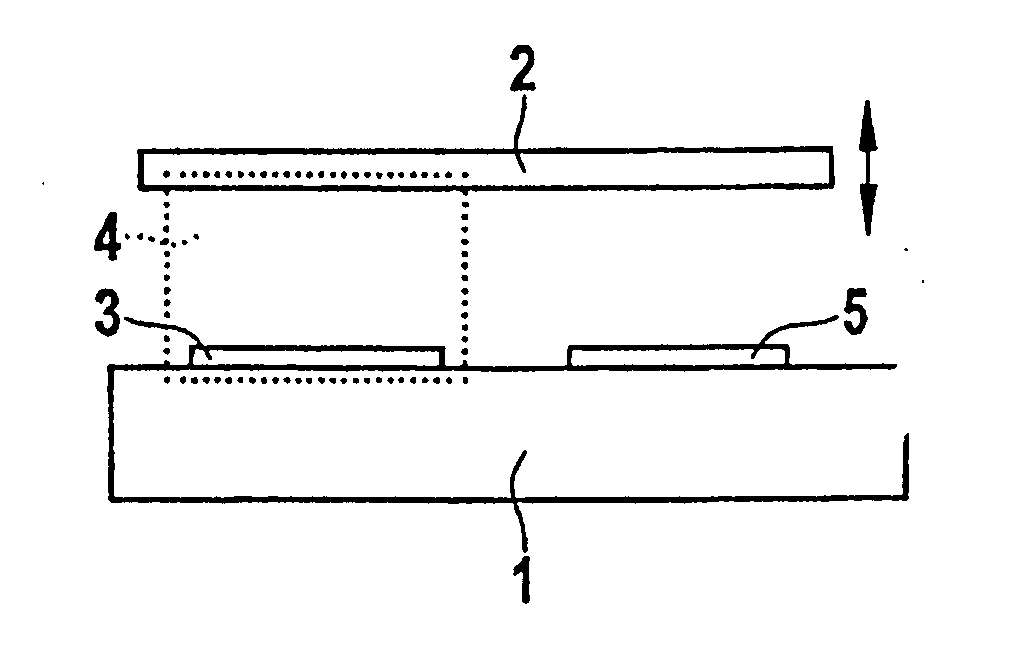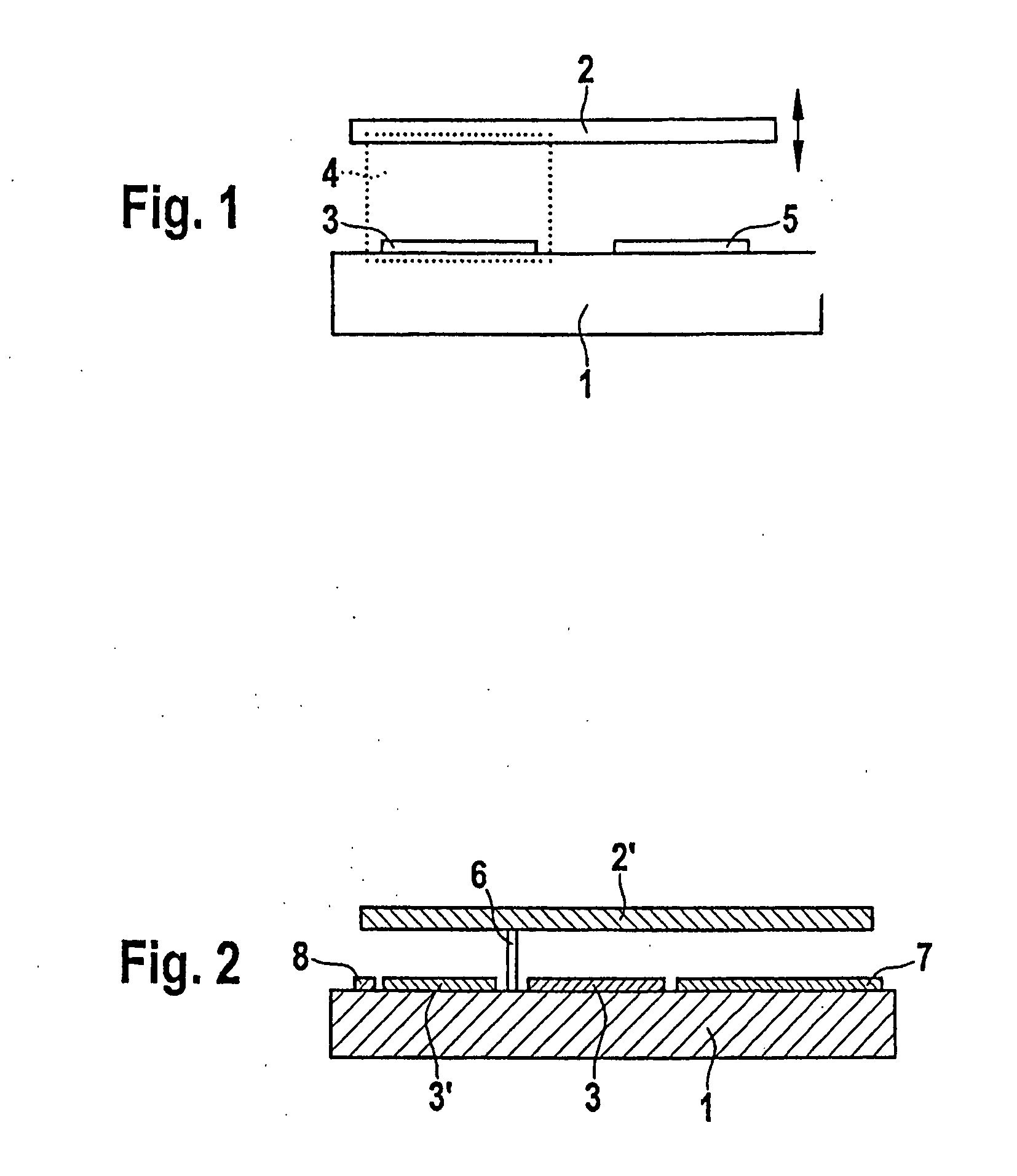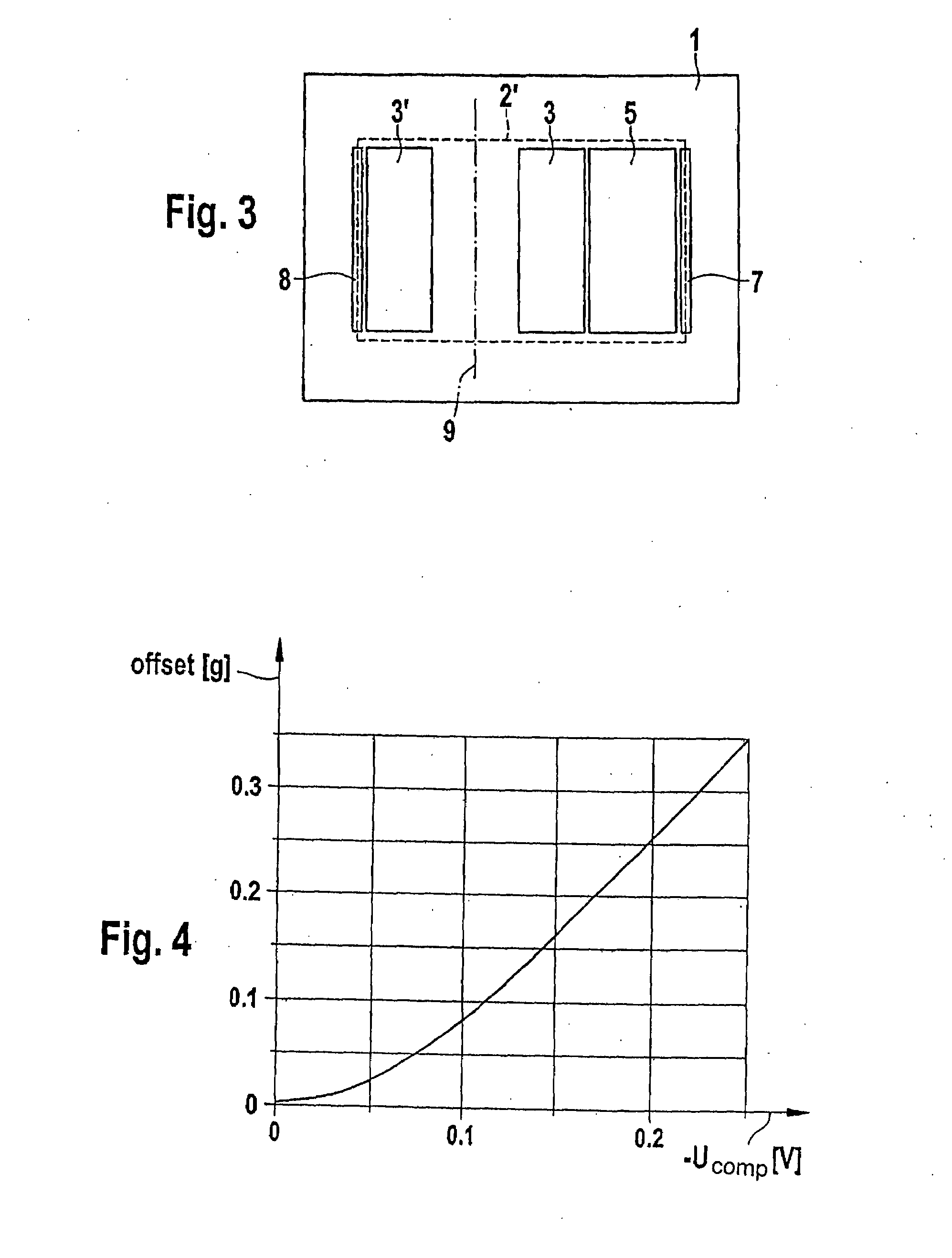Micromechanical inertial sensor having reduced sensitivity to the influence of drifting surface charges, and method suited for operation thereof
a technology of drifting surface charge and inertial sensor, which is applied in the direction of speed/acceleration/shock measurement, measurement devices, instruments, etc., can solve the problems of sensor signal, sensor signal, sensor signal, etc., and achieve good system efficiency
- Summary
- Abstract
- Description
- Claims
- Application Information
AI Technical Summary
Benefits of technology
Problems solved by technology
Method used
Image
Examples
Embodiment Construction
[0024]FIG. 1 shows a schematic illustration of a micromechanical inertial sensor according to the present invention. This micromechanical inertial sensor includes a substrate 1, a seismic mass 2 which may be deflected relative to the substrate, and a flat electrode 3 which in terms of circuitry, together with portions of seismic mass 2, forms in a first region 4 at least one capacitor having a capacitance which depends on the deflection of the seismic mass. At least one additional auxiliary electrode 5 is also included, which is located outside region 4 which forms the capacitor, to which a potential that deviates from the potential of the seismic mass may be applied.
[0025]FIG. 2 shows a schematic sectional illustration of a conventional Z sensor. This Z sensor includes an asymmetrical rocker 2′ as a seismic mass which, via a torsion spring 6, is mechanically connected to a substrate 1 made of polycrystalline silicon. Rocker 2′ extends at a sufficient distance parallel to substrate ...
PUM
 Login to View More
Login to View More Abstract
Description
Claims
Application Information
 Login to View More
Login to View More - R&D
- Intellectual Property
- Life Sciences
- Materials
- Tech Scout
- Unparalleled Data Quality
- Higher Quality Content
- 60% Fewer Hallucinations
Browse by: Latest US Patents, China's latest patents, Technical Efficacy Thesaurus, Application Domain, Technology Topic, Popular Technical Reports.
© 2025 PatSnap. All rights reserved.Legal|Privacy policy|Modern Slavery Act Transparency Statement|Sitemap|About US| Contact US: help@patsnap.com



